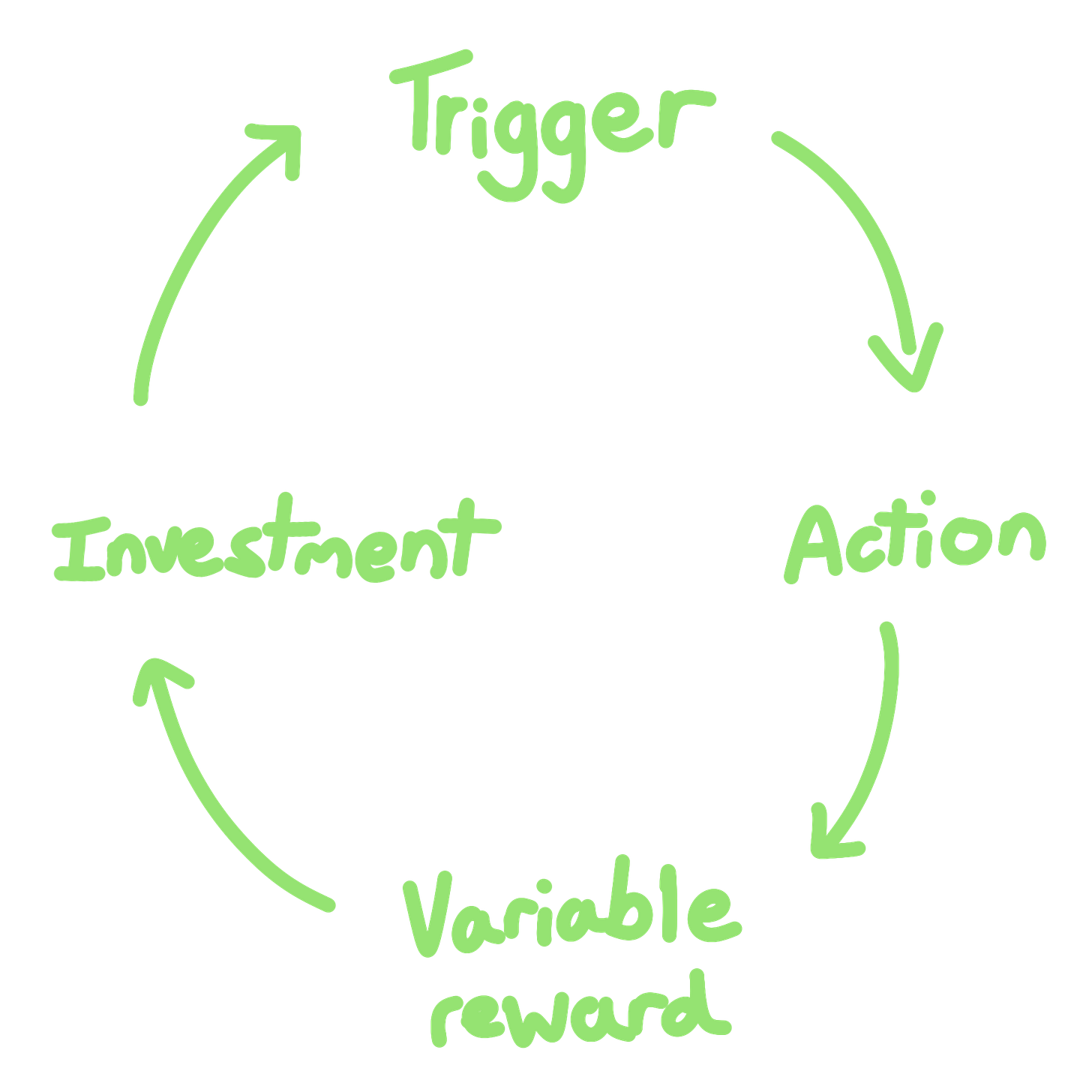Why I Won't Make 'Addictive' Products.
Ethics over engagement - why I'm opting out of the race to the ethical bottom 🍑
Do you ever get those crappy mobile game ads on YouTube? You probably know the ones — a paid shill excitedly exclaims “Wow, the graphics are amazing. It’s so addictive!” in the sort of tone that seems to conveniently forget what addiction is. Or when you fire up a streaming service and it pushes the latest ‘binge-worthy’ series in your face? This slow shift to the normalisation of harmful behaviours is pretty concerning to me, so I looked into the ethics of the product frameworks that seek to make addiction the new norm.
Addiction is great… if you own a casino.
If you own a mobile game with loot boxes, or want to increase the watch time on your streaming service, then it’s obvious — addicted users make more money. But in the world of product design and UX, it’s given another, less immediately sinister name:
‘Habit-forming’ products.
Nir Eyal’s Hooked: How to Build Habit-Forming Products seems to be on every product designer’s bookshelf. Inside, we’re introduced to the Hooked model, which goes a little like this:
🚨 Trigger — The event or feeling that makes a user want to do something. They’re often emotion-driven, like feeling bored, anxious, lonely, or #FOMO (Fear Of Missing Out, if you were born before the year 2000). Or they’re environmental triggers, like seeing an advertisement or being pressured by others into joining a social network.
👆 Action — Once they have that spark of inspiration, the user takes some form of action. This could be scrolling TikToks, maintaining their Duolingo streak, or quickly ordering their favourite coffee. The Hooked Model suggests that the easier the actions are to perform, the more likely someone can be ‘hooked’ (addicted).
🎁 Variable Reward — You’ve probably read about mobile phones and dopamine. Like giving your dog a treat, rewards are essential to enforce habits. But the most important part of the Hooked model is varying the value of the reward. It creates unpredictability. Will the next TikTok I post ‘blow up’ with loads of views? What kind of power tool is Lidl selling this week? What new shows will I find on Netflix?
⏳ Investment — Retention is really difficult. If you have a native app, you can expect only 5% of users to still be giving precious Home Screen space to your product after 30 days1. Getting the user to invest their time, effort, or money significantly increases the likelihood that they’ll come back again. Take Amazon, for example: while they don’t require a profile picture from you, suggesting that you create a profile, make wish lists, or even become a Prime member, creates a sense of investment in the ecosystem.
This model gets lots of praise. Many people are quick to recommend it as “the best way” to ensure a new product’s success, but my unsubstantiated hot take is this:
Product Advice isn’t UX Advice.
When it comes to UX, shouldn't the 'U' stand for 'User,' not 'Upping Revenue at every opportunity'? In fairness to ‘Hooked’ in book-form, it does caution that the model should be used responsibly. But is it ever truly responsible to encourage the formation of addictive behaviour?
Hooked prioritises user engagement at all costs, sometimes even to the detriment of the user’s mental or emotional well-being. To me, UX and Product designers should have a strong ethical compass that asks not just “Can we?” but also “Should we?”
Conclusion
As gloomy as this may first appear, reading ‘Hooked’ has given me some optimism for the future. While the post-lockdown UX boom has receded somewhat, the emotions and well-being of users are still increasingly prioritised by ethical and sustainable businesses.
By appreciating the mechanics behind the ‘habit-forming’ products we use, anyone with a stake in the digital world can be better equipped to use these principles responsibly. Users can find joy in products instead of addictions, and we’ll find satisfaction in knowing we made that happen.
Thanks for reading,
Tom 🐢
👥 Socials: Follow me for more updates:
👔 LinkedIn
📸 Instagram
🌍 My website
https://www.statista.com/statistics/259329/ios-and-android-app-user-retention-rate/








I have this personality that latches onto things - videogames particularly in my youth. Now that I have kids, there's simply no time for that. Great to hear people like yourself are considering the ethics behind habit-forming products =)
The design model you've described here reminds me of the book Addiction by Design by Natasha Schuell. This kind of exploitative use of technology is an enormous problem I think, one that we'll look back on with horror. Nice piece.